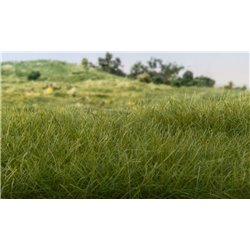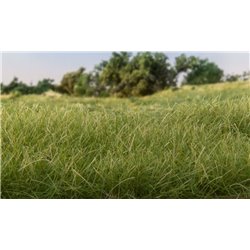Fixing warped plastic parts on a model can be a bit tricky, but it's a manageable task with some patience and the...
No products
Product successfully added to your shopping cart
There are 0 items in your cart. There is 1 item in your cart.
Search Tips
End of year opening times
If you select next day delivery, please note deliveries are not made on New Year's Day.
The shop in Sandown is closed on New Years's Day and closing at 2.30pm on New Year's Eve.
Tuesday 30th: 10am to 4.30pm - Wednesday 31st: 10am to 2.30pm - Thursday 1st: closed - Friday onwards: 10am to 4.30pm.
What is the difference between static grass and fine scatter?
Static grass and fine scatter are both commonly used in scale modelling and model railway projects to create realistic landscapes and ground cover. While they serve similar purposes, there are some key differences between the two. Let's explore these differences :
- Static Grass
Static grass is a type of material that consists of tiny fibres or strands, usually made of nylon or other synthetic materials. These fibres are typically between 1mm to 12mm in length and are designed to mimic the appearance of real grass.
The main characteristic of static grass is that it can be "charged" with static electricity using a special applicator or static grass applicator. An appropriate adhesive is applied to the model surface and then the applicator is used to release charged fibres onto that surface, they stand upright and create a realistic grassy texture. The static charge helps the fibres adhere to the surface and stay in place.
Static grass is available in various lengths and colours, allowing modellers to create different types of grass, such as short grass, medium grass, or even longer meadow grass. It is commonly used in dioramas, model railway layouts, and architectural models to represent grassy areas.
- Fine Scatter
Fine scatter, on the other hand, refers to a finer material used to represent ground cover in scale modelling. It is usually made of fine wood or cork particles or other natural materials and comes in a range of colours to represent different types of ground, such as grass, soil, sand, gravel, or even snow.
Unlike static grass, fine scatter does not require static electricity to adhere to the surface. It is usually applied using an adhesive, such as white glue or spray adhesive. Modellers can sprinkle or spread the fine scatter onto the desired area and then fix it in place by applying the adhesive.
Fine scatter is versatile and can be used to create a variety of ground textures and effects. It can be used to represent bare soil, rocky terrain, muddy areas, or even desert sand. It is often used in conjunction with static grass to create a realistic and varied landscape in scale modelling projects.
In conclusion, while static grass and fine scatter are both used for ground cover in scale modelling and model railway projects, the main difference lies in the materials and application methods. Static grass relies on static electricity to stand upright whilst adhering to the surface, whilst fine scatter is applied using adhesive.
Click here to receive the tips weekly in your mailbox. You can unsubscribe at any time.










